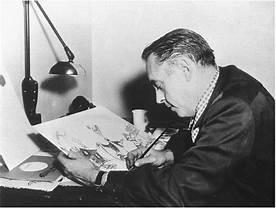"Clutch Cargo" animated cartoons were done without very much animation. Mostly their mouths moved and some hand and feet movement but strangely enough it kept my attention as a young boy. Limited animation was first used to create an appealing cartoon in Clutch Cargo. The first cartoon to use Syncro-Vox was Clutch Cargo, a surprise hit at the time. This was because of the need for animation to be created within a tight time frame. Syncro-Vox was invented by Edwin Gillette, television cameraman and partner in Cambria Studios, as a means of superimposing real human mouths on the faces of animals for the popular "talking animal" commercials of the 1950s. Clutch Cargo employed the Syncro-Vox technique by superimposing live-action human lips over limited-motion animation or even motionless animation cells.
The show only lasted about a year, starting in 1959 and ending 1n 1960. Fifty-nine cartoons were made. Now without further ado...here is a clip cartoon of "Clutch Cargo."











